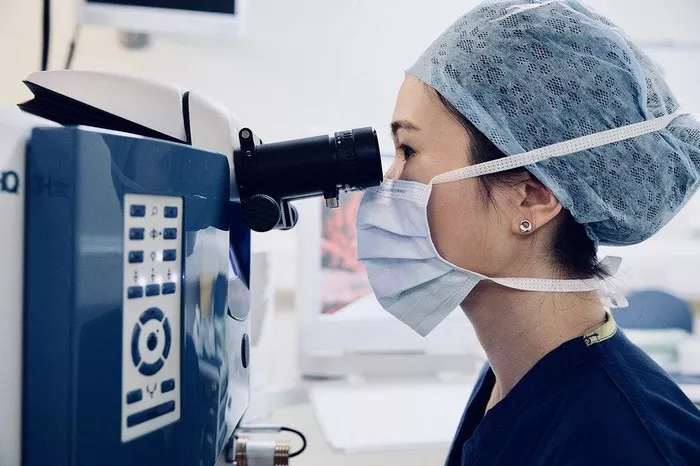Photorefractive keratectomy (PRK) is a type of refractive surgery used to correct vision problems such as myopia (nearsightedness), hyperopia (farsightedness), and astigmatism. Unlike LASIK, PRK doesn’t create a corneal flap but instead involves reshaping the surface of the cornea. Understanding the longevity and effectiveness of PRK surgery is crucial for patients considering this procedure. This article will delve into various aspects of PRK eye surgery, including its duration, effectiveness, recovery, and long-term outcomes.
Introduction to PRK Eye Surgery
PRK was one of the first types of laser eye surgery for vision correction and has been performed since the 1980s. Over the years, advancements in technology and techniques have improved its safety and effectiveness. PRK involves removing the outer layer of the cornea (epithelium) and then using an excimer laser to reshape the underlying corneal tissue. This reshaping allows light entering the eye to be properly focused onto the retina, resulting in clearer vision.
How PRK Works
The procedure begins with the application of anesthetic eye drops to numb the eye. The surgeon then gently removes the epithelium. An excimer laser is used to precisely reshape the corneal tissue based on the patient’s specific vision correction needs. After the laser treatment, a protective contact lens is placed on the eye to aid healing.
Comparison with LASIK
While both PRK and LASIK are effective in correcting vision, they have different approaches. LASIK involves creating a thin flap in the cornea, lifting it to reshape the underlying tissue, and then repositioning the flap. PRK, on the other hand, does not involve creating a flap, which can be advantageous for patients with thinner corneas or those who are at higher risk of eye trauma.
Duration of PRK Surgery
The Procedure Itself
The actual PRK procedure is relatively quick. From start to finish, the surgery typically takes about 10 to 15 minutes per eye. The laser application itself lasts only a few seconds to a couple of minutes, depending on the extent of the vision correction required. Most of the time is spent on preparation and post-operative care.
Immediate Post-Operative Period
Immediately after the surgery, patients are monitored for a short period to ensure there are no immediate complications. Most patients can go home the same day but will need someone to drive them due to the temporary blurriness and discomfort.
Recovery Time
Initial Healing Phase
The initial healing phase for PRK is longer than that for LASIK because the epithelium needs time to regenerate. This phase typically lasts about three to five days. During this period, patients may experience discomfort, blurred vision, light sensitivity, and a foreign body sensation in the eye.
Visual Recovery
While the initial healing takes a few days, it can take several weeks to months for vision to fully stabilize. Most patients notice significant improvement in their vision within the first week, but it can take up to three to six months for the full visual outcome to be realized.
Follow-Up Care
Follow-up visits are crucial to monitor the healing process and ensure that the cornea is recovering properly. Patients usually have their first follow-up visit the day after surgery, with additional visits over the next few weeks and months.
See Also: 5 Types of Eye Surgery Robots
Long-Term Effectiveness
Stability of Vision Correction
One of the key benefits of PRK is the long-term stability of vision correction. Studies have shown that PRK provides stable vision correction for many years. Most patients enjoy improved vision for at least 10 to 20 years after surgery, with many experiencing permanent correction.
Factors Influencing Longevity
The longevity of PRK results can be influenced by several factors, including the patient’s age, the degree of vision correction needed, and changes in vision over time due to aging or other eye conditions. For example, presbyopia (age-related difficulty in near vision) may still occur in patients over the age of 40, requiring reading glasses despite successful PRK.
Risks and Complications
Common Side Effects
Like any surgical procedure, PRK carries some risks. Common side effects include dry eyes, glare, halos, and starbursts around lights, particularly at night. These side effects usually diminish over time as the eye heals.
Rare Complications
Although rare, complications such as infection, significant corneal haze, or scarring can occur. Proper pre-operative screening and post-operative care are essential to minimize these risks.
Advantages of PRK
Suitable for Thinner Corneas
PRK is often recommended for patients with thinner corneas who may not be good candidates for LASIK. Because PRK does not involve creating a corneal flap, it preserves more corneal tissue.
Less Risk of Flap Complications
Since PRK does not create a flap, there is no risk of flap-related complications such as dislocation or infection, which can occur with LASIK.
Effective for High-Impact Activities
PRK is a preferred option for individuals involved in high-impact sports or professions where there is a higher risk of eye trauma. Without a corneal flap, the structural integrity of the cornea is more stable.
Conclusion
PRK eye surgery is a well-established and effective method for correcting vision problems such as myopia, hyperopia, and astigmatism. The procedure itself is quick, but the recovery process is longer compared to LASIK. Most patients experience significant and stable vision improvement that can last for many years, with some enjoying permanent correction. While there are risks and potential complications, the advantages of PRK make it a suitable option for many individuals, especially those with thinner corneas or those engaged in high-impact activities. Understanding the duration, recovery, and long-term outcomes of PRK can help patients make informed decisions about their vision correction options.
Related topics:

